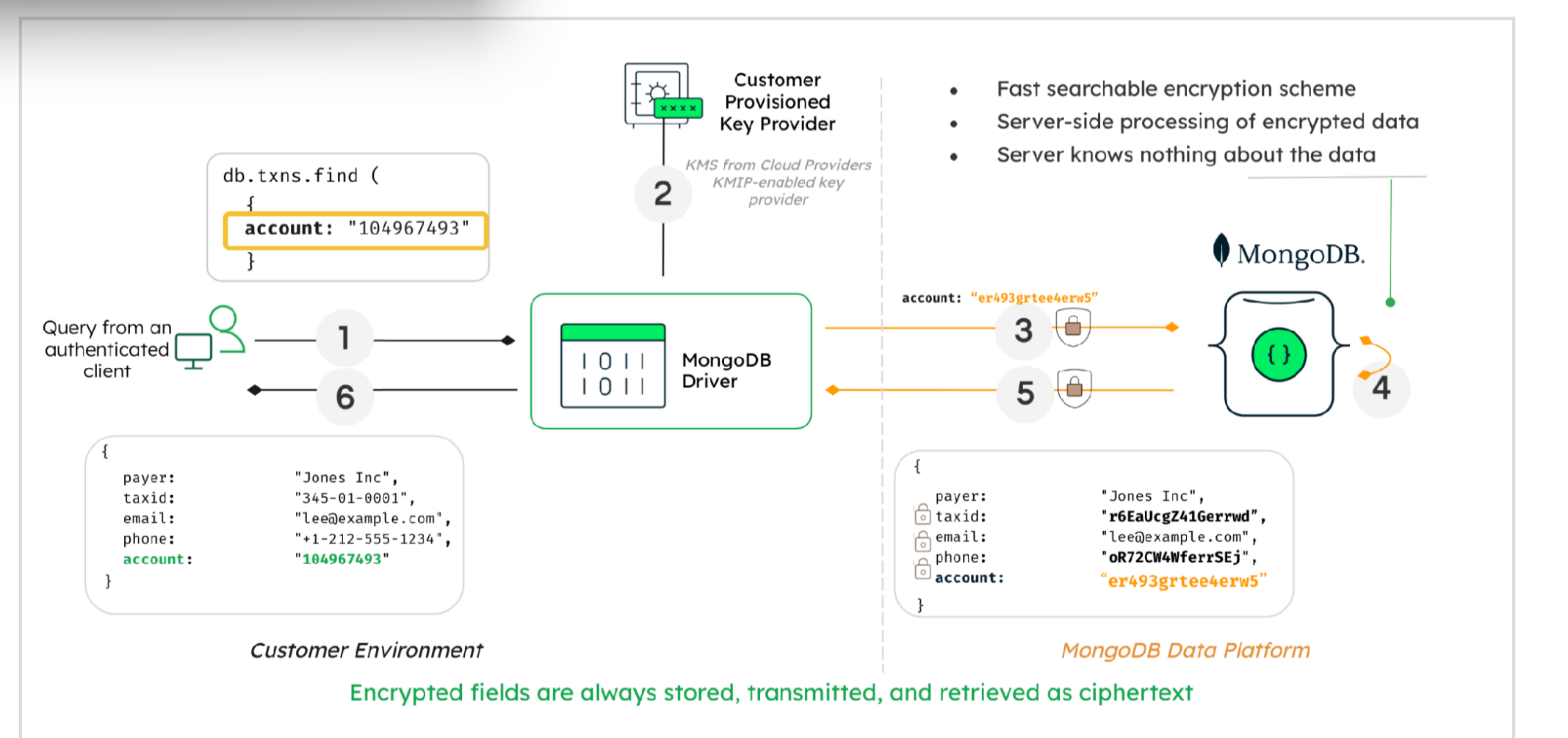At its annual MongoDB World conference, MongoDB today announced a series of updates to its eponymous database, including the addition of querying encrypted data without having to decrypt it first, columnstore indexing and a new SQL interface. But maybe most importantly, the company is using the event to talk about what it describes as its ‘developer data platform.’
As MongoDB’s recently-appointed CTO Mark Porter told me, he believes that today’s announcements are the culmination of the last four or five years of work for MongoDB. While the company started out as a pure database service that was bringing a new type of architecture to the market, in recent years it built out the capabilities around this core service by adding features like integrated search, acquiring mobile application development platform Realm, launching the Atlas data lake service and more.
“We’ve hit so much traction with those things that we’re pulling them all together into a developer data platform,” Porter said. “We’re leaving them composable, we’re leaving them standards-based — JSON, Parquet, all the things you would think — and yet, what we’re doing is we’re taking those components and we’re pulling them all together into the toolkit, which all the feedback is telling us is what developers want to write modern applications.”
He stressed that while this is the first time the company is talking about this as a cohesive platform, these are not necessarily new features and products. In his view, in order to call something a platform — a word that’s often being used too loosely these days — is something you can build on top of and where the different pieces work together naturally but also offer interoperability. In addition, he noted that a modern platform also has to be managed and secure.
Talking about interoperability, MongoDB is launching a new integration with Jamstack startup Vercel this week, for example, which will allow developers to more easily use MongoDB as the database to build websites and applications on top of Vercel’s platform. And while people have obviously built similar integrations in the past, Porter called this an ‘intimate’ and ‘elegant’ integration, where both companies worked on their products to enable a better developer experience.
Another new feature worth highlighting is the company’s new Atlas SQL Interface. MongoDB, of course, offers its own query language, MQL. But for better or worse, data analysts are mostly familiar with SQL and Mongo is going after more of this market. Now, to be clear, this is only a read-only interface, so the set of use cases is limited. Porter also stressed that the company isn’t planning to move away from MQL.
For those analytics workloads, MongoDB is now also adding columnstore indexing, which will be available later this year. With this, users can create and maintain purpose-built indexes and query those significantly faster than before (“hundreds of times faster,” Porter said). The company is also bringing time series collections to the database to help developers build applications that monitor physical systems or track financial data, for example.
The highlight of today’s release is the preview of queryable encryption, though. This allows users to encrypt their data on the client side and store it as randomized encrypted data in the database, while still being able to run expressive queries over it. MongoDB argues that this marks the first time a database offers this capability, which goes beyond most existing encryption solutions that only encrypt data in transit and at rest, but not when it’s in use. In part, that’s because in-use encryption is complex and adds quite a bit of overhead. In addition, MongoDB argues, it also put the burden on developers to understand cryptography and even then, the querying capabilities are limited. Porter stressed that this is not homomorphic encryption, the standard technology for building similar features.






